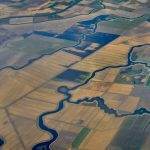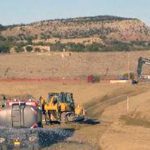We’ve been remiss in posting our water news videos.
On Sunday, October 20, we covered the weather extremes in the Southwest in the following embedded video:
From torrential floods and courtroom showdowns to cutting-edge AI breakthroughs, the video dove into the biggest water and climate stories across the Colorado River Basin and beyond.
Arizona launched its first major groundwater reform in 25 years — balancing housing growth with long-term water security. In Washington, the EPA’s proposed rule could reshape how small water systems operate, while scientists at Clemson University unveiled an AI model that “thinks” like a hydrologist to forecast river flows.
California made waves when Governor Newsom vetoed a PFAS chemical ban, citing affordability concerns. Meanwhile, Nebraska and Colorado took their century-old South Platte River feud to the Supreme Court.
There’s good news, too: native fish are rebounding across the West — from salmon in the Klamath to Apache trout in Arizona. But a University of Arizona study warns that human pumping has drained Tucson’s aquifers twice as much as nature ever did.
And topping it off — historic October storms from Hurricanes Priscilla and Raymond drenched the Southwest, flooding towns but easing drought in parts of Arizona, Colorado, and Utah.
Today, October 26, we covered a variety of issues, from geothermal water rights to the Colorado River Basin’s drought recover in the following embedded video:
From the depths of Utah’s geothermal fields to California’s decade of groundwater reform, the video looked at some of the biggest water and climate developments shaping the West.
Utah lawmakers are redefining who owns the heat beneath their land, California celebrates ten years of progress under the Sustainable Groundwater Management Act, and New Mexico targets “forever chemicals” with bold new labeling rules. Plus, Congress weighs a major boost for recycled water systems, and the latest U.S. Drought Monitor brings long-awaited relief for much of the West.



